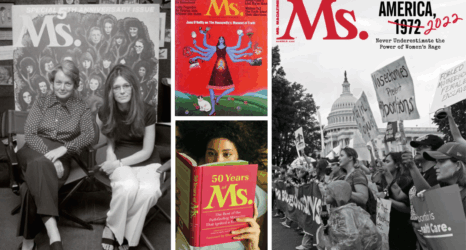Spielberg. Scorsese. Tarantino. Lucas. Hitchcock.
When we think of filmmakers, we often think of men. It’s not surprising, considering a recent study by the Center for the Study of Women in Television and Film found women account for only 16 percent of directors, writers, executive producers, producers, editors and cinematographers working on the top films.
But the film industry wasn’t always male-dominated. In the early days of film, women furthered the advancement of the then-new art form (and later, the industry), contributing generously to behind-the-scenes fields such as directing, screenwriting and editing, and innovating visual narrative techniques filmmakers still use today.
This series, “Forgotten Women of Film History,” seeks to celebrate the women behind the camera, without whose imagination, determination and passion for storytelling, movies as we know them would not exist, but whose contributions remain universally unknown and often willfully forgotten by audiences and industry alike.
First up: Alice Guy (who later hyphenated her name to include her married name, Blaché), born July 1, 1873 in Paris, France and died March 24, 1968 in Wayne, New Jersey. Guy was the first-ever woman film director and was one of the first filmmakers ever to sync picture and sound (long before “talkies” became all the rage in 1927). Guy also pioneered visual storytelling techniques such as split-screen, double exposure and the dramatic close-up, and even helped shape film acting technique by asking her performers to give a more naturalistic delivery, reminding them to “be natural” via a large sign hanging in her studio.
Yes, her studio. Guy was the first woman ever to own and manage her own film studio, The Solax Company, in Fort Lee, New Jersey, the largest pre-Hollywood production house of its kind.
Did I mention she’s also credited with making the earliest-known film featuring an all-African American cast (1912’s A Fool and His Money)?
So, why haven’t you heard of her?
Guy was 21 years old when she accepted a secretarial position at inventor and industrialist Léon Gaumont‘s camera equipment company in Paris in 1894. In 1895, both Gaumont and Guy were invited to a private screening and demonstration of the Lumière brothers‘ revolutionary invention, the cinématographe, the first reliable projection system for the still-emerging moving pictures technology. Across the flickering screen, Gaumont saw an opportunity to expand his business, but Guy saw something else—an opportunity to tell stories. By 1896, Guy had made her first film, La Fée aux Choux (The Cabbage Fairy).
But that was only the beginning. In a career spanning 20 years, Guy wrote, directed or produced over 1,000 films for the Gaumont Film Company and later, her own studio, Solax. Her contribution to film, though indisputable, has been largely ignored and quite literally erased. In 1930, Gaumont, whose business boomed under Guy’s artistic direction and technological innovation, published the history of his company without any mention of Guy at all. When Guy contacted Gaumont about the glaring omission, Gaumont promised to include her part in later editions, but Guy’s inclusion was never published.
Fortunately, filmmakers Pamela B. Green and Jarik van Sluijs are securing Guy’s honorable place in film history with their forthcoming documentary, Be Natural. They’ve even started a hashtag, #SaveAlice, to engage a larger audience in the unraveling of the mystery surrounding the disappearance of Guy’s work and her omission from film history books. Green, who connects most to Guy’s entrepreneurial spirit, recalls AMC’s 2000 TV movie, Reel Models: The First Women of Film, as her first introduction to Guy.
“I was shocked because it wasn’t just the fact that she was the first female director, it was all the other accomplishments that followed at such an early time,” says Green. “What makes this woman get up one day and say she’s going to pick up a camera and make films in a time where women can’t vote? And then she comes to this country, can’t even speak the language, and starts her own studio.”
A movie about a woman who made movies, made by a woman. Alice Guy would be proud.
Photo courtesy of Flickr user Breve Storia del Cinema licensed under Creative Commons 2.0.





